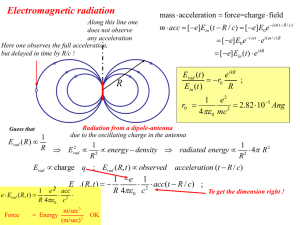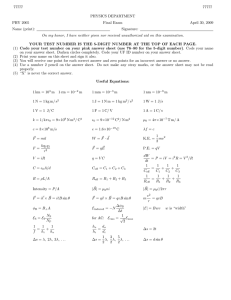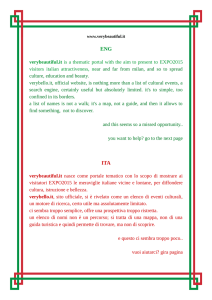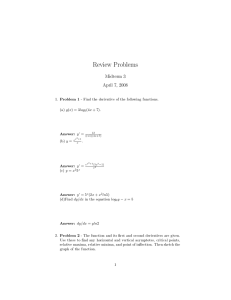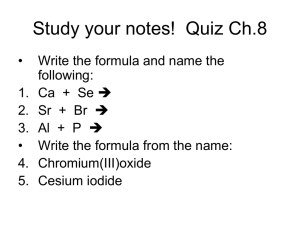Math 115 HW #7 Solutions
advertisement
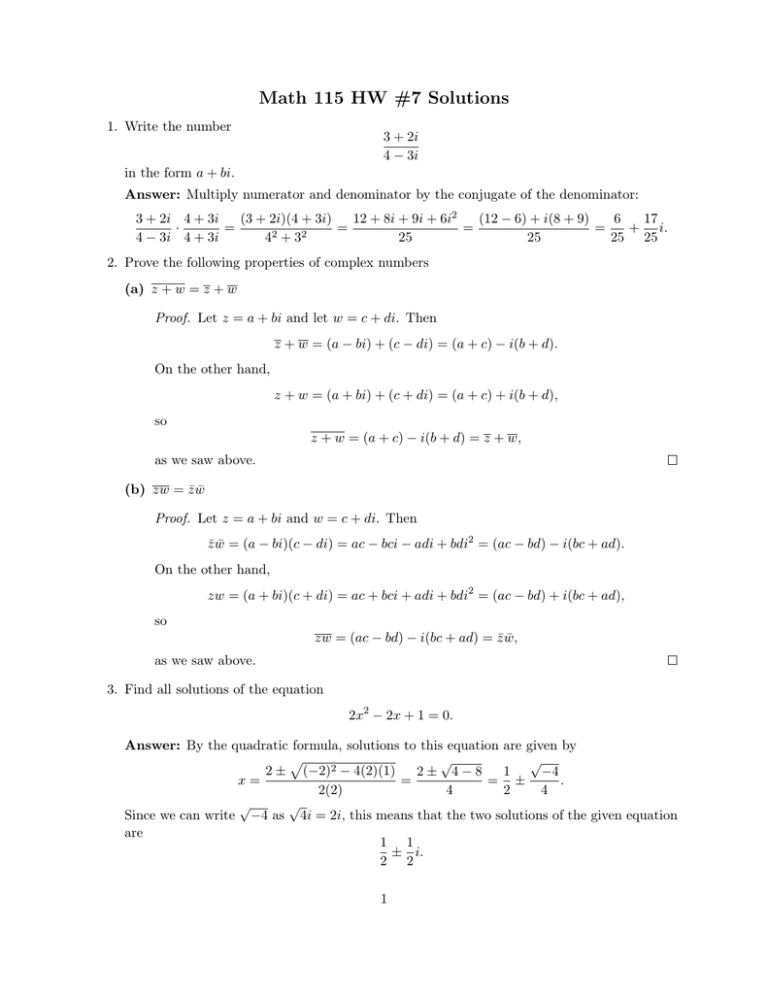
Math 115 HW #7 Solutions 1. Write the number 3 + 2i 4 − 3i in the form a + bi. Answer: Multiply numerator and denominator by the conjugate of the denominator: 3 + 2i 4 + 3i (3 + 2i)(4 + 3i) 12 + 8i + 9i + 6i2 (12 − 6) + i(8 + 9) 6 17 · = = = = + i. 2 2 4 − 3i 4 + 3i 4 +3 25 25 25 25 2. Prove the following properties of complex numbers (a) z + w = z + w Proof. Let z = a + bi and let w = c + di. Then z + w = (a − bi) + (c − di) = (a + c) − i(b + d). On the other hand, z + w = (a + bi) + (c + di) = (a + c) + i(b + d), so z + w = (a + c) − i(b + d) = z + w, as we saw above. (b) zw = z̄ w̄ Proof. Let z = a + bi and w = c + di. Then z̄ w̄ = (a − bi)(c − di) = ac − bci − adi + bdi2 = (ac − bd) − i(bc + ad). On the other hand, zw = (a + bi)(c + di) = ac + bci + adi + bdi2 = (ac − bd) + i(bc + ad), so zw = (ac − bd) − i(bc + ad) = z̄ w̄, as we saw above. 3. Find all solutions of the equation 2x2 − 2x + 1 = 0. Answer: By the quadratic formula, solutions to this equation are given by p √ √ 2 ± (−2)2 − 4(2)(1) 2± 4−8 1 −4 x= = = ± . 2(2) 4 2 4 √ √ Since we can write −4 as 4i = 2i, this means that the two solutions of the given equation are 1 1 ± i. 2 2 1 4. Let z= √ 3 + i, w =1+ √ 3i. Find polar forms for zw, z/w and 1/z by first putting z and w into polar form. Answer: Remember that, if ζ = x + iy is to be written in the polar form ζ = reiθ , we know that y r = |ζ|, θ = tan−1 . x Therefore, for the given z and w, we can determine the polar forms by computing q √ 2 √ √ |z| = 3 + 12 = 3 + 1 = 4 = 2 q √ 2 √ √ |w| = 12 + 3 = 1 + 3 = 4 = 2 1 π tan−1 √ = 6 3 √ 3 π = . tan−1 1 3 Thus, we see that z = 2ei(π/6) and w = 2ei(π/3) . Therefore, using these expressions for z and w, zw = 2ei(π/6) 2ei(π/3) = (2 · 2)ei(π/6+π/3) = 4eiπ/2 (which is just another name for 4i). Similarly, z 2ei(π/6) 2 = i(π/3) = ei(π/6−π/3) = ei(−π/6) . w 2 2e Finally, 1 1 1 1 = i(π/6) = e−i(π/6) = ei(−π/6) . z 2 2 2e 5. Find all the fifth roots of 32 and sketch them in the complex plane. Answer: Suppose α is a fifth root of 32. Write α in polar form: α = reiθ . Then 5 32 = α5 = reiθ = r5 ei(5θ) . Therefore, since we can write 32 in polar form as 32ei(0) , 32ei(2π) , 32ei(4π) , 32ei(6π) , 32ei(8π) , we see that r5 = 32, meaning that r = 2. Also, 5θ = 0, 2π, 4π, 6π, 8π, so the fifth roots of 32 are 2ei(0) = 2, 2ei(2π/5) , 2ei(4π/5) , 2ei(6π/5) , 2ei(8π/5) . 2 6. Write e−iπ in the form a + bi. Answer: Using Euler’s formula, e−iπ = ei(−π) = cos(−π) + i sin(−π) = −1 + 0i = −1. 7. Use Euler’s formula (i.e. eiθ = cos θ + i sin θ) to prove the following formulas for cos x and sin x: eix − e−ix eix + e−ix , sin x = . cos x = 2 2i Proof. Using Euler’s formula, eix = cos x + i sin x. Similarly, e−ix = cos(−x) + i sin(−x), which means (using the fact that cosine is even and sine is odd) e−ix = cos x − i sin x. Therefore, eix + e−ix (cos x + i sin x) + (cos x − i sin x) 2 cos x = = = cos x, 2 2 2 as desired. Likewise (cos x + i sin x) − (cos x − i sin x) 2i sin x eix − e−ix = = = sin x, 2i 2i 2i completing the proof. 3
